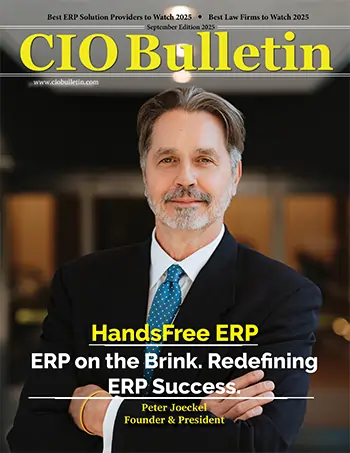Home Industry Management consulting How Gantt Charts Help CIOs Pla...
Management Consulting

CIO Bulletin
17 October, 2025
Managing a complex IT portfolio means aligning projects, resources, and timelines. Traditional tools often miss the dependencies and conflicts that come with digital transformation. Gantt charts provide the transparency and strategic perspective that CIOs require, transforming inactive initiatives into an active framework that facilitates more informed executive choices. This blog examines how Gantt chart tools enable CIOs to lead with accuracy, agility, and organization-wide oversight.
Gantt charts excel at showing how tasks and projects connect. CIOs often oversee the collection of interconnected projects, where a single delay can trigger a chain reaction of issues. Recognizing these ripple effects is crucial for efficient supervision. The visual timeline makes such interconnections immediately apparent. It may demonstrate that the development process for a new application cannot commence until the foundational platform infrastructure is finished. This prevents costly scheduling issues and keeps teams productive, rather than waiting on unfinished tasks.
By clearly projecting these connections, the Gantt chart enables CIOs to identify the project’s critical path. Any delay in the sequence pushes back the whole project. Armed with this understanding, a CIO can execute strategic choices, such as assigning extra resources to a delayed yet essential task, safeguarding the overall portfolio timeline. This active oversight of dependencies is vital for sustaining momentum and avoiding ripple effects of delays across the complete IT roadmap.
A static project plan does not consider the changing nature of resource availability. Specialized staff, such as data architects and cybersecurity professionals, are often shared across multiple projects within a portfolio. A Gantt chart, especially if enhanced with resource management facilities, presents a tidy view of who is doing what and when. It immediately highlights over-allocation where one key team member is assigned to multiple key activities simultaneously, resulting in an impossible bottleneck.
Addressing these limitations in advance provides a significant strategic advantage. A CIO can use the Gantt chart to simulate various scenarios and adjust non-essential tasks to balance resource demand. This ensures top-tier experts are working on the most impactful work without burnout. Modern deployments, such as an interactive React JS Gantt chart, allow for real-time adjustments. This dynamic ability enables immediate updates to resource plans in response to unexpected events, ensuring that the portfolio plan remains a practical and viable tool rather than a fixed, obsolete record.
A Gantt chart helps non-technical stakeholders like CEOs understand complex IT schedules. It turns technical progress into a clear visual story of goals, funding, and results. This clarity is essential for establishing achievable expectations, gaining ongoing support, and showcasing the disciplined management of the IT function. It shifts discussions from theoretical ideas to concrete schedules and outputs.
Additionally, this visual instrument promotes consistency throughout the whole organization. When leaders of business units understand how their proposed initiatives fit within the larger portfolio and understand the reasoning for prioritization, it alleviates tension. It also promotes shared responsibility for the IT roadmap. The chart serves as a unified reference point that connects technical implementation with business strategy, ensuring that all individuals are aligned and understand how their efforts contribute to broader corporate goals.
The Gantt chart serves as a strategic hub for today’s CIO. It provides transparent insights into dependencies, resources, and timelines. This visibility enables IT leaders to transition from reactive solutions to proactive portfolio management. In a rapidly evolving digital environment, this understanding and authority differentiate leading organizations.







